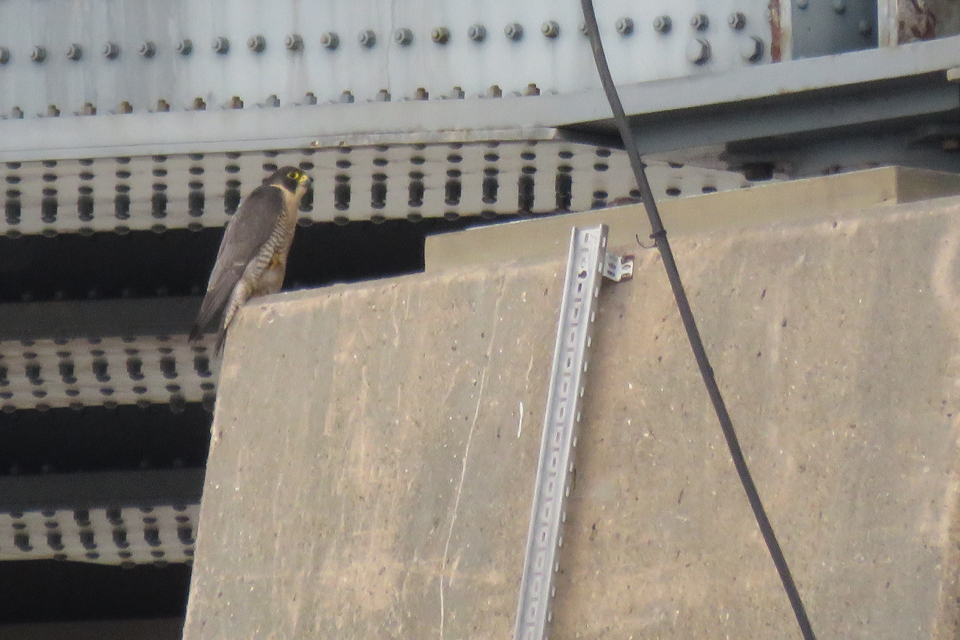- Four new research hubs will develop robotic technology to improve safety in off-shore wind and nuclear energy
- £68 million from the Industrial Strategy Challenge Fund for artificial intelligence and robotics research announced
- Government also commits to £16 million worth of funding for smart energy systems innovation
More than £68 million of investment from the Industrial Strategy Challenge Fund for robotics and artificial intelligence projects aimed at improving safety in extreme environments has been announced by the government.
This investment will develop robots and artificial intelligence able to take on jobs in the freezing depths of the North Sea, dealing with extreme environments in the process of nuclear energy production, the hostile vacuum of space, and heat of deep mining.
In her keynote speech to the Innovate UK Conference in Birmingham today (8th November), Climate Change and Industry Minister Claire Perry set out how British experts and innovators are leading the world in this new sector, receiving support from the Industrial Strategy Challenge Fund.
The government is working with business and academia in order to encourage investment in robotics and artificial intelligence – a priority area of the Industrial Strategy.
Almost £45 million will be used to set up four new research hubs based at the University of Manchester, University of Birmingham, University of Surrey and Heriot-Watt University in Edinburgh.
The centres of excellence, managed by the Engineering and Physical Sciences Research Council (EPSRC), will be responsible for developing robotic technology to enable safer working environments in space and deep mining and the hazardous and harsh environments of nuclear energy and off-shore wind.
As well as receiving government investment, the four hubs will be supported by £52 million of industry support from commercial and international partners, and UK Space Agency is co-funding the University of Surrey hub.
Minister for Climate Change and Industry Claire Perry said:
Britain leads the world in innovation and technology and through the Industrial Strategy Challenge Fund, we are making £68 million available to projects in robotics and artificial intelligence with applications in clean renewable energy generation to ensure the UK is the place new technology is nurtured.
Next week, I will be at the COP23 conference in Germany, and it will be abundantly clear there that, if we want to truly make a difference to our climate as well as take advantage of the economic opportunities of our transition to a low carbon economy, it will come down to continued innovation.
The investment announced by the Climate Change and Industry Minister today also includes:
- £4.3 million for the Natural Environment Research Council (NERC) to fund five research projects at the National Oceanography Centre (NOC), and the Universities of Exeter and Southampton, to develop sensors capable of working in the ocean’s extreme conditions
- £16.5 million for a collaborative research and development competition, run by Innovate UK, with winners set to include more than 70 businesses, 13 universities and 10 research organisations
- funding of £3 million for 17 studies which focus on demonstrating how artificial intelligence can operate in extreme environments, following a separate competition run by Innovate UK
Professor Philip Nelson, Chief Executive of the Engineering and Physical Sciences Research Council, said:
These new Robotics Hubs will draw on the country’s research talent to nurture new developments in the field of robotics and provide the foundations on which innovative technologies can be built.
The resulting outcomes from this research will allow us to explore environments that are too dangerous for humans to enter without risking injury or ill-health. The Industrial Strategy Challenge Fund is helping us achieve a joined up approach to research, discovery and innovation.
Ruth McKernan, Chief Executive of Innovate UK, said:
These pioneering projects driven by the very best minds in UK research and industry exemplify the huge potential of what can be achieved through the Industrial Strategy Challenge Fund and the long-term benefits for the UK economy.
These are just the first competitions in robotics and AI, there will be further opportunities for businesses in the coming months.
Professor Duncan Wingham, Chief Executive of the Natural Environment Research Council, said:
These sensors will help us to better understand our oceans, helping us to manage them sustainably for the future. The projects will develop ambitious new technologies that work in hazardous and extreme environments, maintaining the UK’s world-class status in marine robotics.
Other industries, such as the water, aquaculture and industrial waste, are also likely to benefit from these technologies.
Today’s announcements follow the publication of the industry-led Made Smarter review, which predicted Britain’s manufacturing sector could unlock more than £450 billion over the next decade and create thousands of jobs if it successfully embraced digitisation, robotics and artificial intelligence.
Alongside the Department for Digital, Culture, Media and Sport, BEIS has also been working with Professor Dame Wendy Hall and Dr. Jerome Pesenti to establish how to grow the UK can grow and support its burgeoning artificial intelligence sector.
In April, the government announced £1 billion of investment through the Industrial Strategy Challenge Fund for cutting-edge technologies to create jobs and raise living standards. Other areas receiving government support include cutting edge healthcare and medicine, battery storage and satellite and space technology.
Ahead of attending climate change talks at COP23 in Germany next week, the Minister also announced £16 million for research into two new smart energy innovation competitions, which build on Government’s ambition to fund over £2.5 billion in clean technology innovation, as set out in last month’s Clean Growth Strategy.
These will focus on creating technologies which will reduce demand on the electricity grid at peak periods and to increase demand at times when low-carbon generation is at its peak, saving money and cutting emissions.
These new competitions will also be used to explore ways that smart energy systems can help to reduce energy use by schools, and small hospitality businesses.
This comes following the government publishing its Smart Systems and Flexibility Plan in July this year, which set out a range of measures to reduce the regulatory burdens of making our energy system more smart.
The minister also announced the winners of the first phases of two energy innovation competitions looking into the feasibility of energy storage and non-domestic demand side response, with £400,000 awarded to nine companies across the UK.
Notes to editors:
Summaries of the EPSRC hubs:
National Centre for Nuclear Robotics
Led by: Professor Rustam Stolkin, University of Birmingham
ISCF funding: £11.3 million
Project partners: Universities of Bristol, Edinburgh, Essex, Lincoln, West of England, Lancaster University, Queen Mary University of London.
The National Centre for Nuclear Robotics will aim to develop advanced robotics and AI technologies for nuclear industry applications. These are required to help deal with nuclear waste, and alleviate the need to send humans into hazardous environments. These advances are also needed to maintain and monitor the UK’s existing nuclear power stations, and facilitate the safe building and operation of new-build nuclear power-plants.
The Robotics and Artificial Intelligence for Nuclear (RAIN)
Led by: Professor Barry Lennox, University of Manchester
ISCF funding: £11.9 million
Project partners: Universities of Oxford, Liverpool, Sheffield, Nottingham, Lancaster, Bristol and the UKAEA’s RACE centre.
The Robotics and Artificial Intelligence for Nuclear (RAIN) Hub involves robotics and nuclear engineering experts across the UK and international partners from the US, Italy and Japan. It will undertake world-leading research and develop innovative technologies to address the challenges facing the nuclear industry, from decommissioning and waste management to fusion, plant life extension and new build.
Offshore Robotics for Certification of Assets (ORCA)
Led by: Professor David Lane, Heriot-Watt University
ISCF funding: £14.3 million
Project partners: Universities of Edinburgh, Oxford and Liverpool, Imperial College London
The ORCA Hub will develop robotics and AI technologies for use in extreme and unpredictable environments. The Hub will create robot-assisted asset inspection and maintenance technologies that are capable of making autonomous and semi-autonomous decisions and interventions across aerial, topside and marine domains.
Future AI and Robotics for Space (FAIR-SPACE)
Led by: Professor Yang Gao, University of Surrey
ISCF funding: £6.7 million
Project partners: Imperial College London, Universities of Edinburgh, Liverpool, Salford and Warwick
The aim of FAIR-SPACE is to go beyond the-state-of-the-art in robotic sensing and perception, mobility and manipulation, on-board and on-ground autonomous capabilities, and human-robot interaction, to enable space robots to perform more complex tasks on long-duration missions with minimal dependence on ground crew. FAIR-SPACE is co-funded by the UK Space Agency.
Additional information:
- The new Industrial Strategy Challenge Fund (ISCF) was announced in November 2016 by the Prime Minister as part of the Government’s wider industrial strategy.
- The funding from the ISCF will be spent across 6 key areas over the next 4 years, driving progress and innovation that will create opportunities for businesses and sectors across the UK.
- The government has worked with businesses and academics to identify core industrial challenges, where research and innovation can help unlock markets and industries of the future in which the UK can become world-leading.
- The Clean Growth Strategy was published last month and has innovation at its heart.
- The government will invest £1 billion supporting the take-up of ultra-low emission vehicles, including helping consumers to overcome the upfront cost of an electric car and developing one of the best electric vehicle charging networks in the world.
- The UK’s low carbon economy has the potential to grow in the region of 11 per cent per year up to 2030, meaning that in just 13 years it could support as many as two million more jobs and export up to £170 billion in low carbon goods and services each year.
- The winners of the first phase of the Energy Feasibility Study Competition were:
Highview Enterprises Ltd., London for liquid air energy storage;
SSE Renewables Developments UK Ltd in Perth, focused on power-to-gas;
ITM Power Trading Ltd in Sheffield, focused on power-to-gas; and
Cumulus Energy Storage Ltd in Rotherham, focused on Copper/Zinc super-storage batteries
- The winners of first phase of the Non-Domestic Demand Side Response competition are:
DuckDuck Ltd., London, focused on cloud based energy management;
Totem Sustainable Solutions in Wells, focused on intelligent energy saving platforms;
Flextricity Ltd., Edinburgh focused on demand-response portfolios;
Kiwi Power, London focused on demand response aggregation; and
Innovatium LLP, Windsor focused on an innovative liquid air production and storage system.



